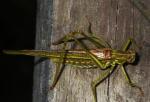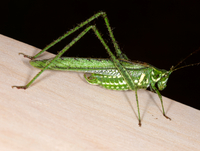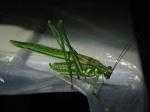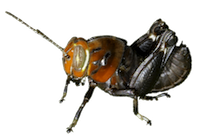| |
Family (Alpha): | |
| View | Tettigoniidae Members:
| NC Records |
|---|
Inscudderia walkeri Hebard, 1925 - Eastern Cypress Katydid |
 |  |
|
|
|
|
|
Image Gallery for Inscudderia walkeri - Eastern Cypress Katydid
|
 | Recorded by: Jim Petranka and Bo Sullivan
Richmond Co.
Comment: |  | Recorded by: E. Corey, S. Cameron, M. Frazer
Robeson Co.
Comment: |
 | Recorded by: J. Wyche
Gates Co.
Comment: |  | Recorded by: D. Lequire
Washington Co.
Comment: |
|

 »
»


 »
»
